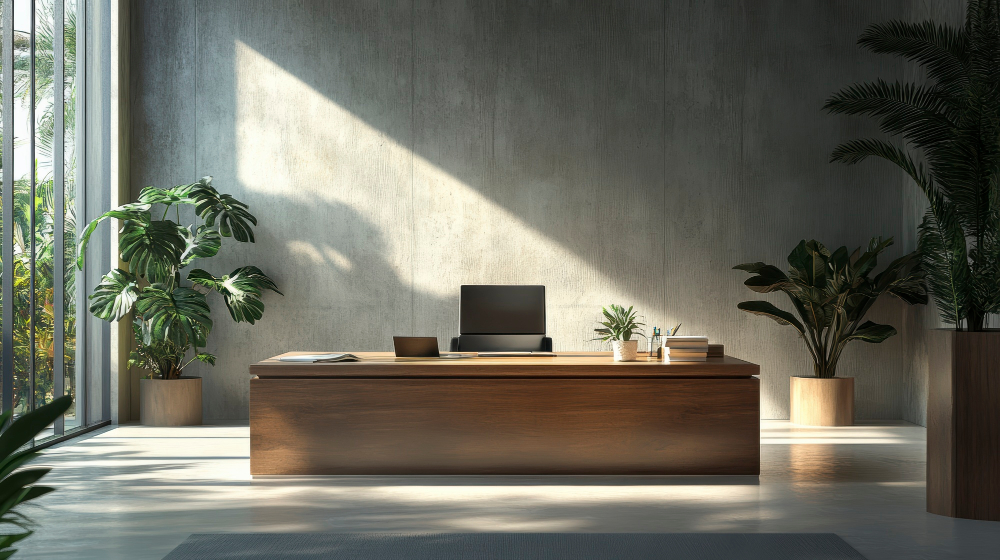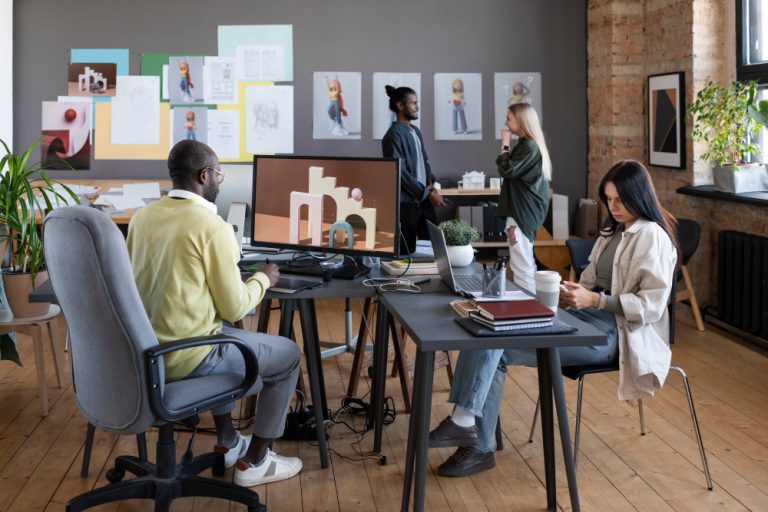Silicon Valley has always been ahead of the curve.
But in 2025, the conversation isn’t just about open offices vs. private cabins — it’s about AI-driven, data-backed workspace optimization.
Companies like Google, Apple, and fast-growing startups are using AI to track behavior, predict needs, and design spaces that boost productivity and well-being.
The result? Offices that learn and evolve with their people.
What Exactly Is AI-Driven Office Design?
AI-driven office design means leveraging data and machine learning to shape workspaces.
It’s not about fancy gadgets — it’s about smarter decision-making:
- Heat maps to track traffic flow and identify underused zones.
- Predictive algorithms to optimize seating layouts for hybrid teams.
- AI-powered environmental controls (lighting, temperature) that adapt in real time.
- Wellness analytics to reduce burnout and improve employee satisfaction.
Why Silicon Valley Companies Are All In
Three big reasons explain the rapid adoption:
- Hybrid Work Demands Flexibility
Post-pandemic, offices must cater to both remote and in-person employees. AI balances space usage dynamically. - Real Estate Costs Are Insane
Bay Area commercial leases are among the highest in the U.S. AI reduces wasted space and maximizes ROI per square foot. - Data-Driven Culture
Tech companies thrive on metrics — applying the same logic to office design was inevitable.
Real Examples: AI in Action
- Google’s Bay View Campus: Uses AI to monitor energy consumption and adjust HVAC systems based on occupancy.
- NVIDIA’s HQ: AI optimizes meeting room allocation by analyzing calendar data and foot traffic.
- Startups in Palo Alto: AI tools recommend furniture layouts to accommodate rapid scaling without constant remodeling.
How AI Shapes Office Elements
1. Layout Planning
AI tools analyze employee movement and suggest flow-friendly layouts — reducing bottlenecks and fostering collaboration.
2. Smart Lighting
AI-powered systems mimic natural circadian rhythms, boosting energy in the morning and promoting calm in the evening.
3. Acoustic Optimization
Machine learning models detect noise patterns and recommend soundproofing or acoustic panels.
4. Energy Efficiency
AI predicts energy usage spikes and automates conservation measures, cutting utility costs by up to 30%.
Benefits You Can’t Ignore
- Better Employee Experience – Happier teams, lower turnover.
- Lower Operating Costs – Optimized energy and real estate usage.
- Future-Proof Workspaces – Scalable and adaptable to new work models.
- Sustainability Wins – Supports green building certifications like LEED.
How to Start with AI-Driven Design
Step 1: Audit Your Current Space
Collect data on space utilization, employee satisfaction, and energy usage.
Step 2: Choose the Right Tools
Platforms like Envoy, VergeSense, or AI modules in Autodesk help analyze data.
Step 3: Start Small
Pilot AI for one floor or department before scaling.
Step 4: Align with Company Culture
AI design should enhance your workstyle — not replace it.
The Future: Offices That Think for Themselves
By 2027, AI won’t just assist — it will predict trends, adapt layouts automatically, and integrate with smart building ecosystems.
For Silicon Valley, this isn’t the future. It’s happening now.
Final Thoughts
AI-driven office design isn’t just a tech buzzword.
It’s the bridge between human needs and real estate efficiency — and it’s redefining how companies in the Bay Area think about workspaces.





